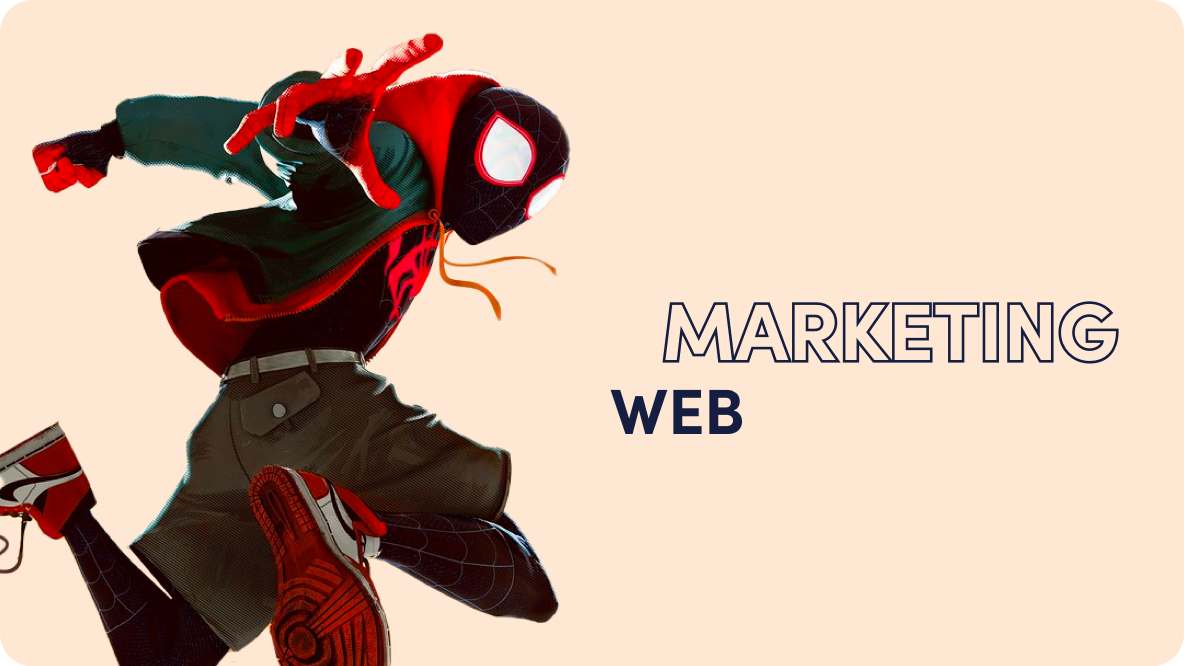Across the Spider-Verse: What Genius Content Marketing Looks Like

On June 1, 2023, “Spiderman: Across the Spider-Verse” was released, blurring the lines between superheroics and promotional genius. Picture this: A web-slinger from a parallel universe, a sassy spider-girl, and a British anarchist punk rocker (also spider-y) – all converging to create a cinematic [M]arvel known as “Spider-Man Across the Spider-Verse.” This animated masterpiece isn’t just a film; it’s a marketing masterpiece that deserves a closer look (and also a highly enjoyable film).
Garnering box office accolades as well as critical acclaim, “Spider-Verse” has been a colossal hit. But what truly elevates it beyond just good entertainment is its mastery of marketing.
Marketing the Spider-Verse: An Incredible Web of Success
“Across the Spider-Verse” serves as a blueprint for any marketer seeking to captivate audiences, boost product awareness, and craft an unforgettable journey for their brand.
It’s obvious enough that the marketing for the movie was a success (they partnered with lots of individual brands across multiple platforms, grossing over a billion dollars upon release), but what is more subtle is the success of the movie itself as marketing for something larger.
The Spider-Verse film successfully weaves several essential marketing tactics together: It manages to simultaneously appeal to minority audiences while maintaining broad appeal, repurposes old content to great effect, and generates impressive exposure for a huge marketing funnel, all while taking care of product placement on the way – literally featuring purchasable products within the film.
Wide promotion: For every Spiderman fan
Most impressive is how the movie promotes itself to such a broad demographic. The typical target audience for a movie in which a superhero beats up the bad guys is middle-class teenage boys. “Across the Spider-Verse” defies this niche in every way while remaining entirely true to the nature of the source material.
Marketing power begins with the product
Despite being animated, the movie has real adult appeal with an art style that is strikingly beautiful and original. Each frame is a piece of art in and of itself. Drawing inspiration from old comics and new technology, the film manages to inspire a sense of nostalgia while feeling totally modern. A friend of mine, in awe, turned to me and said “Imagine if we’d had cartoons like these when we were kids.” The merit of the art dramatically increases the viewership, independent of the content. In this instance, form is function.
Strength in diversity
Beyond the animation, the movie (shockingly for a superhero film) absolutely smashes the Bechdel test. This test requires 1. Two women who 2. Speak to each other and 3. Not about a man. “Across the Spider-Verse” achieves this even in the intro scene.
Furthermore, the cast is pretty much as diverse as it possibly could be. In the United States, 12.5% of the population speaks Spanish, and Miles Morales, the biracial son of an African-American dad and Puerto Rican mom, stands out from the predominantly white protagonists we see in other superhero films. The movie is great irrespective of whether you’re old, young, back, white, male, female, or anything else. Massive appeal means a massive audience and by extension, satisfied customers.
Part of a larger product family
But what does it matter if the movie does all these things, yet you’ll only know about it after watching the movie? Simple: “Across the Spider-Verse” isn’t advertising just the movie itself, but a secondary, much larger product. It sells its own brand, comics, and the genre as a whole.
Let me explain: Comic books have existed with a very specific target demographic for over a hundred years, progressing through several “ages” to reach the present. As with all niche hobbies, the stories and canon have grown and developed with reference to themselves, until we reach the modern state of the industry: a massive, and massively convoluted, collection of interrelated universes with a core of similar but essentially different characters. This is so much the case that it’s almost impossible to know where to begin.
This is where Spider-Verse comes in. The movie was a box office success, after a massive marketing effort that drew mass audience attention and itself functions as a broad but entertaining introduction to the whole concept of a comic multiverse. This was done in a way that makes intuitive sense and helps reconcile one of the oldest casual-fan questions about the genre: Who is the real Spiderman (Toby McGuire? Tom Holland? Andrew Garfield? Shameik Moore?) The answer is that they’re all real, from different universes, and that you, the viewer, can pick and choose your favorite to follow.
A multiverse marketing funnel
As such “Across the Spider-Verse” acts as the first stage in a marketing funnel, not only for itself and the films that will follow it, but also for the whole comic book industry. This may seem a bit far-fetched if you haven’t seen the movie, but to drive the point home, each time a new Spiderman is introduced, the movie literally pauses for a moment to display its comics. Aside from actual product placement, this helps to dissolve any doubt that there is a broader world of source material behind the movie and combines with the unique art style to make a convincing case for comic book consumption.
This is content marketing at the very highest level. The movie is a stand-alone product that makes money, but additionally, and more importantly, draws real interest for good reason. It informs a previously untapped audience on the nature of a brand and a product (Marvel, and superhero comics in general) in a way that engages them, informs them in detail of its nature, and leaves them craving more (the movie, SPOILER ALERT, ends “to be continued…”). At the same time, it presents audiences with the product they can continue onto, should they be interested further, in a way that is both humorous and clear. A simple search for the Spiderman multiverse returns thousands of results referring to different comic series, each with their own lore and runs.
Repurposing content: A superhero marketing tactic
And, finally, the beauty of the project is that it’s all recycled content. Viewers new to the franchise might appreciate the movie for its exciting pacing or plot, but veterans of the genre are aware that the characters, the style, and much of the plot are recycled from the comics. For long-time fans, this isn’t a problem, as it’s well-accepted that the movie is based on the book (or more appropriately the anime on the manga), and marketing masters will recognize this as simple (and industry-approved) genius.
The comics provide source material for the films, which in turn direct traffic back to the comics.
All this to gently push a new generation of potential comic book fans just over the lip of what is a very very VERY (there are over 1000 Spiderman comics alone, not to mention hundreds of other heroes with their own stories) long marketing funnel.


